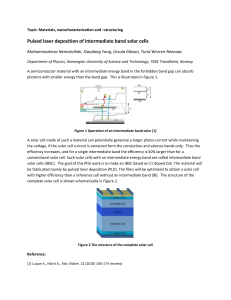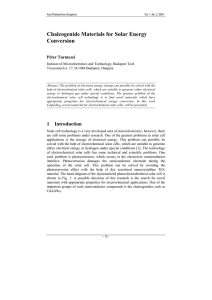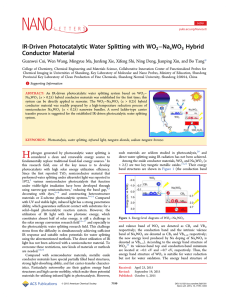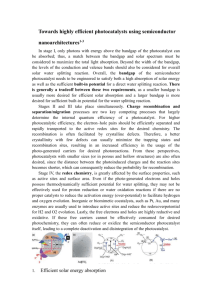Bachelor/Master project: Fabrication of Novel Photoanodes for
advertisement
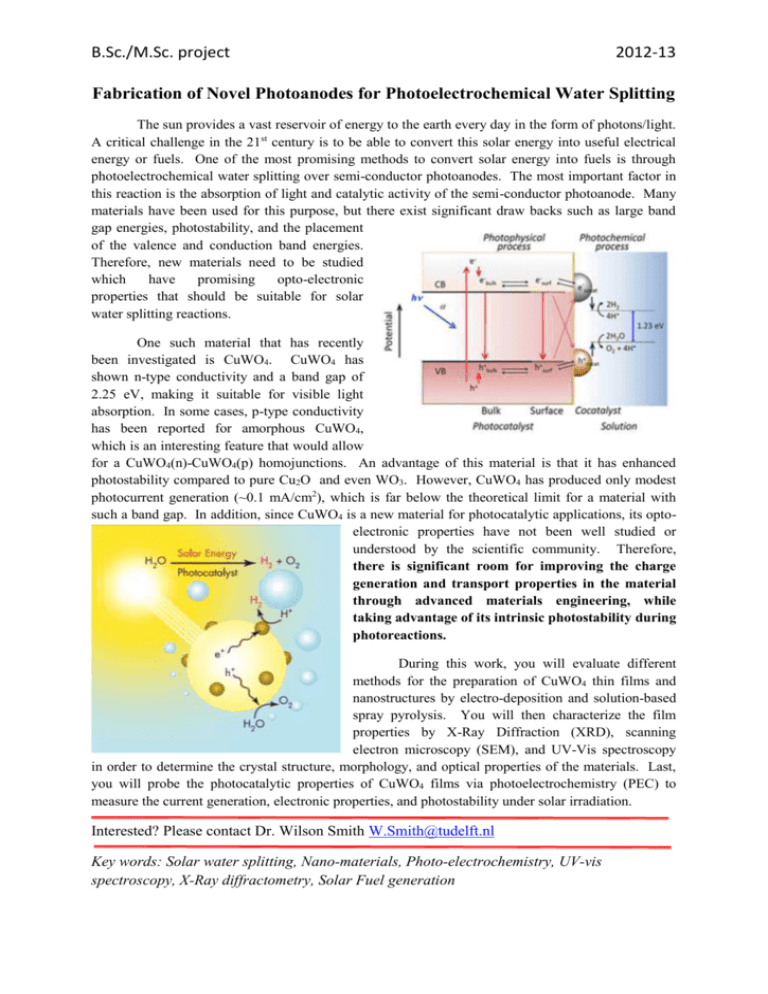
B.Sc./M.Sc. project 2012-13 Fabrication of Novel Photoanodes for Photoelectrochemical Water Splitting The sun provides a vast reservoir of energy to the earth every day in the form of photons/light. A critical challenge in the 21st century is to be able to convert this solar energy into useful electrical energy or fuels. One of the most promising methods to convert solar energy into fuels is through photoelectrochemical water splitting over semi-conductor photoanodes. The most important factor in this reaction is the absorption of light and catalytic activity of the semi-conductor photoanode. Many materials have been used for this purpose, but there exist significant draw backs such as large band gap energies, photostability, and the placement of the valence and conduction band energies. Therefore, new materials need to be studied which have promising opto-electronic properties that should be suitable for solar water splitting reactions. One such material that has recently been investigated is CuWO4. CuWO4 has shown n-type conductivity and a band gap of 2.25 eV, making it suitable for visible light absorption. In some cases, p-type conductivity has been reported for amorphous CuWO4, which is an interesting feature that would allow for a CuWO4(n)-CuWO4(p) homojunctions. An advantage of this material is that it has enhanced photostability compared to pure Cu2O and even WO3. However, CuWO4 has produced only modest photocurrent generation (~0.1 mA/cm2), which is far below the theoretical limit for a material with such a band gap. In addition, since CuWO4 is a new material for photocatalytic applications, its optoelectronic properties have not been well studied or understood by the scientific community. Therefore, there is significant room for improving the charge generation and transport properties in the material through advanced materials engineering, while taking advantage of its intrinsic photostability during photoreactions. During this work, you will evaluate different methods for the preparation of CuWO4 thin films and nanostructures by electro-deposition and solution-based spray pyrolysis. You will then characterize the film properties by X-Ray Diffraction (XRD), scanning electron microscopy (SEM), and UV-Vis spectroscopy in order to determine the crystal structure, morphology, and optical properties of the materials. Last, you will probe the photocatalytic properties of CuWO4 films via photoelectrochemistry (PEC) to measure the current generation, electronic properties, and photostability under solar irradiation. Interested? Please contact Dr. Wilson Smith W.Smith@tudelft.nl Key words: Solar water splitting, Nano-materials, Photo-electrochemistry, UV-vis spectroscopy, X-Ray diffractometry, Solar Fuel generation


